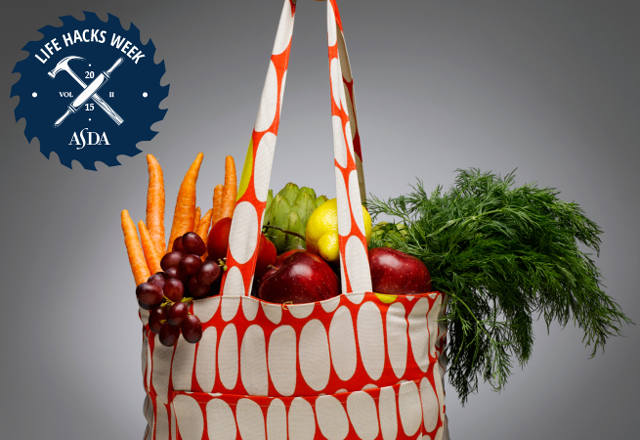
Eat well to study well. That’s been my philosophy through dental school and as I begin my fourth year, it’s held up well. Living on a tight budget, grocery shopping requires a little creativity to nourish body and mind. Below are my top 10 life hacks for whittling down your weekly grocery bill while elevating your palate.
- Do your homework. Actually, this is one of my favorite ways to take a study break. Look into your community resources to learn what your grocery store’s weekly promotions are. In some areas, this may mean skimming the weekend circulator. In others, it may mean signing up for your market’s weekly email. Make note of what cuts of meat are on sale, what produce is in season, and what middle aisle goods you may be able to stock up on at a bargain price.
- Make a plan. Once you’ve done a little research, then put some thought into what you want to make that week. Try to aim for meals that will be just as good the next day (or few days) for lunch. If you plan on buying more adventurous produce, try to find two recipes that you can cut in half. That way, if you don’t like grilled garlic scapes, you have a back up plan to make them into pesto to avoid wasting food.
- Keep inventory of what you have in stock. Buying non-perishables that you use often, like canned tomatoes, almond milk, or cereals, in bulk can be a great way to stretch your budget. Just make sure you know you have it in the house. I keep a post it with these items that I (usually) double check before my weekly shopping. It can also help guide how I might pair fresh produce.
- Keep a running grocery list. Add items as you run out throughout the week. I like to keep mine on my iPhone using the “Reminders” app, so I can cross off as I work my way through the store. “Grocery Pal” is another great alternative. The free app sorts your groceries by sections such as produce, dairy, and bulk. Keeping a running list will help you to limit your trips to the store for forgotten items-trips that usually include extra impulse items you didn’t budget for.
- Online grocery shopping is getting more affordable. Many stores now provide the option of ordering online to save time when you pick up at the store. This can be another great way to streamline your purchases and prevent extra impulse buys. The only downside is that you may miss the end of the aisle deals.
- Go mobile. Apps like “Instacart” offer pretty competitive pricing on staple items. Amazon is even getting in on the trend in select cities. For those of us who may rely on Chipotle for most of our weekly meals, using delivery services can be a good baby step to break the take out habit. While it’s not always the most affordable choice, it is a better alternative. Look for new user promotions to really save.
- Think outside the plastic bag. Farm shares or Community Agriculture Shares (CSAs) are a great way to buy local. Many programs operate on a seasonable basis. Members buy their share in the beginning of the growing season and then receive weekly or bi-weekly deliveries throughout the summer and fall months. Although it can be expensive to pay up front, the weekly breakdown is often competitive with your neighborhood grocery store. It’s also a great way to try new produce and be involved with the community. I joined one based outside of Philly three years ago and it has added a lot more color to my plates and has helped me become more creative in the kitchen.
- Visit farmers markets. Weekly farmers markets can be another good alternative if you’re not quite ready to commit to a season long share. Buying what’s in season is a double win-good for your budget and good for our planet. Try not to be too tempted by all the artisanal jams and locally baked pies!
- Swap lunch. If making meals in bulk and eating the same thing for days in a row is a little tough to palate, coordinate with a classmate to swap half of your dish. Set a price of how much you’re both willing to spend on ingredients and then swap Tupperware. That way, you will both benefit from cooking and buying in bulk while still enjoying variety in your weekly meals. Bonus points if you can make it a three- or even four-way trade.
- Look for hacks. Last summer, I was briefly addicted to Emerald Nuts Cocoa Roast Almonds. At close to $10 a can, it was a love that wasn’t meant to last. Luckily, sites like Pinterest and Buzzfeed often offer hacks of your favorite snacks and take out dishes. More often than not, you can save a bundle by making it yourself. Let’s not even mention how much you’ll impress your friends at the lunch table!
For more life hacks to help jump start your school year, check out ASDA’s past Life Hack Week posts. If you have hacks that you’d like to share with your peers, leave comments in the section below!
~MaryJane Anderson, Pennsylvania ’16, contributing editor





Your post is very nice thanks for sharing this post..